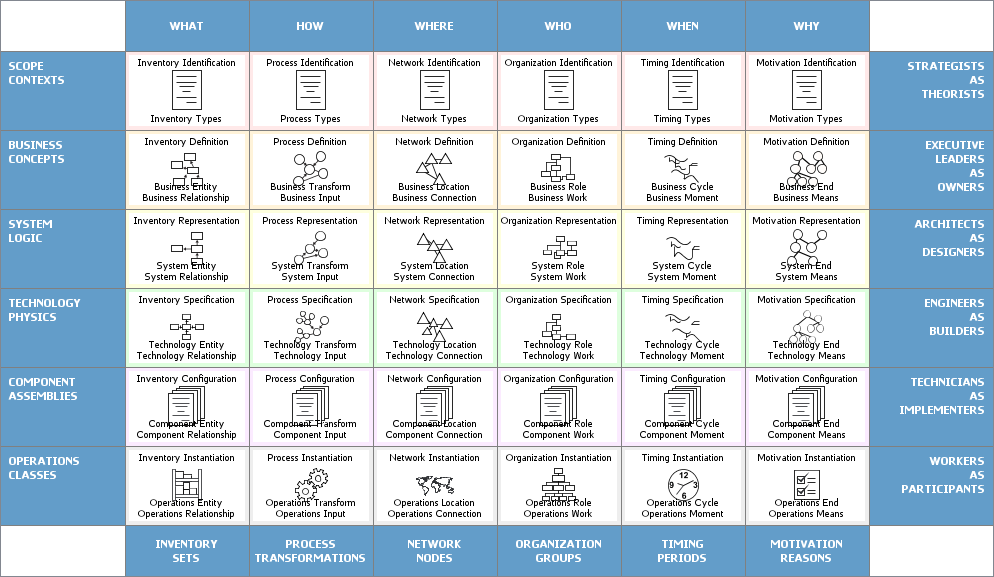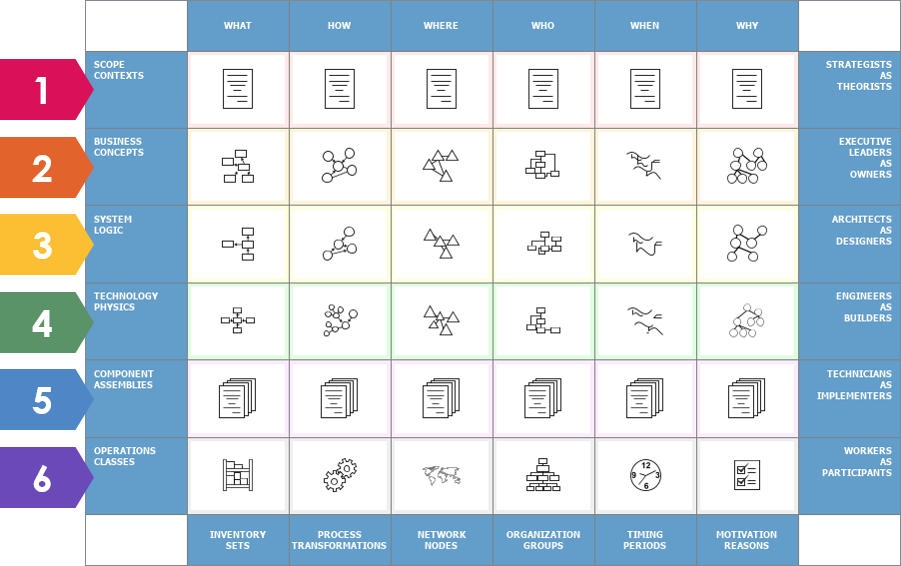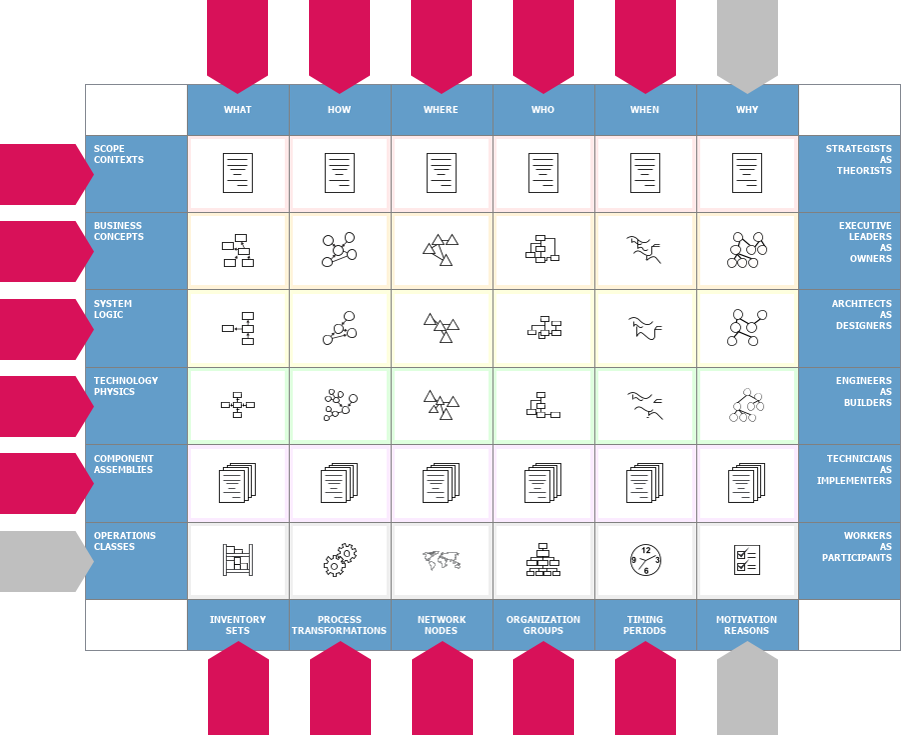The Zachman Framework is a logical structure for classifying and organizing the design artifacts of an enterprise that are significant to its management. It is an enterprise ontology structure that provides a way of viewing an enterprise and its information systems from different perspectives and showing how the components of the enterprise are related.

6 Rows (viewpoint) + 6 Columns (W5H) + 6 Rules
Zachman Framework is a two-dimensional classification scheme for descriptive representations of an Enterprise that is structured as a matrix containing 36 cells, each of them focusing on one dimension or perspective of the enterprise. Rows are often presented as different viewpoints involved in the systems development process, while columns represent different perspectives of the stakeholders involved in the organization. We should also be mindful of the 6 rules when using the Zachman framework.
- The rows of Zachman Framework focus on describing the enterprise from six viewpoint perspectives of the stakeholders.
- These six perspectives are based on English language interrogatives ‘what’, ‘where’, ‘who’, ‘when’, ‘why’, and ‘how’ (known as W5H).
- A Zachman Framework has 6 rules
6 Rows (Viewpoints)
Each row represents a distinct view of the organization, from the perspective of different stakeholders. These are ordered in the desired priority sequence. A row is allocated to each of the following stakeholders:
- Scope Contexts – External Requirements and Drivers
- Business Concepts – Business Process Models
- System Logic – Requirements Definition
- Technology Physics – Solution Definition and Development
- Component Assemblies – As-built and deployment
- Operations Classes – functioning Enterprise and Evaluation

6 Columns
The columns represent the interrogatives or questions that are asked of the enterprise. These are:
- What (data) – what is the business data, information or objects?
- How (function) – how does the business work, i.e., what are the business’ processes?
- Where (network) – where are the business operations?
- Who (people) – who are the people that run the business, what are the business units and their hierarchy?
- When (time) – when are the business processes performed, i.e., what are the business schedules and workflows?
- Why (motivation) – why is the solution the one chosen? How was that derived from? What motivates the performance of certain activities?
6 Rules
- Columns have no order
- Each column has a simple, basic model
- A basic model of each column is unique
- Each row presents a distinct view
- Each cell is unique
- Combining the cells in one row forms a complete description from that view



